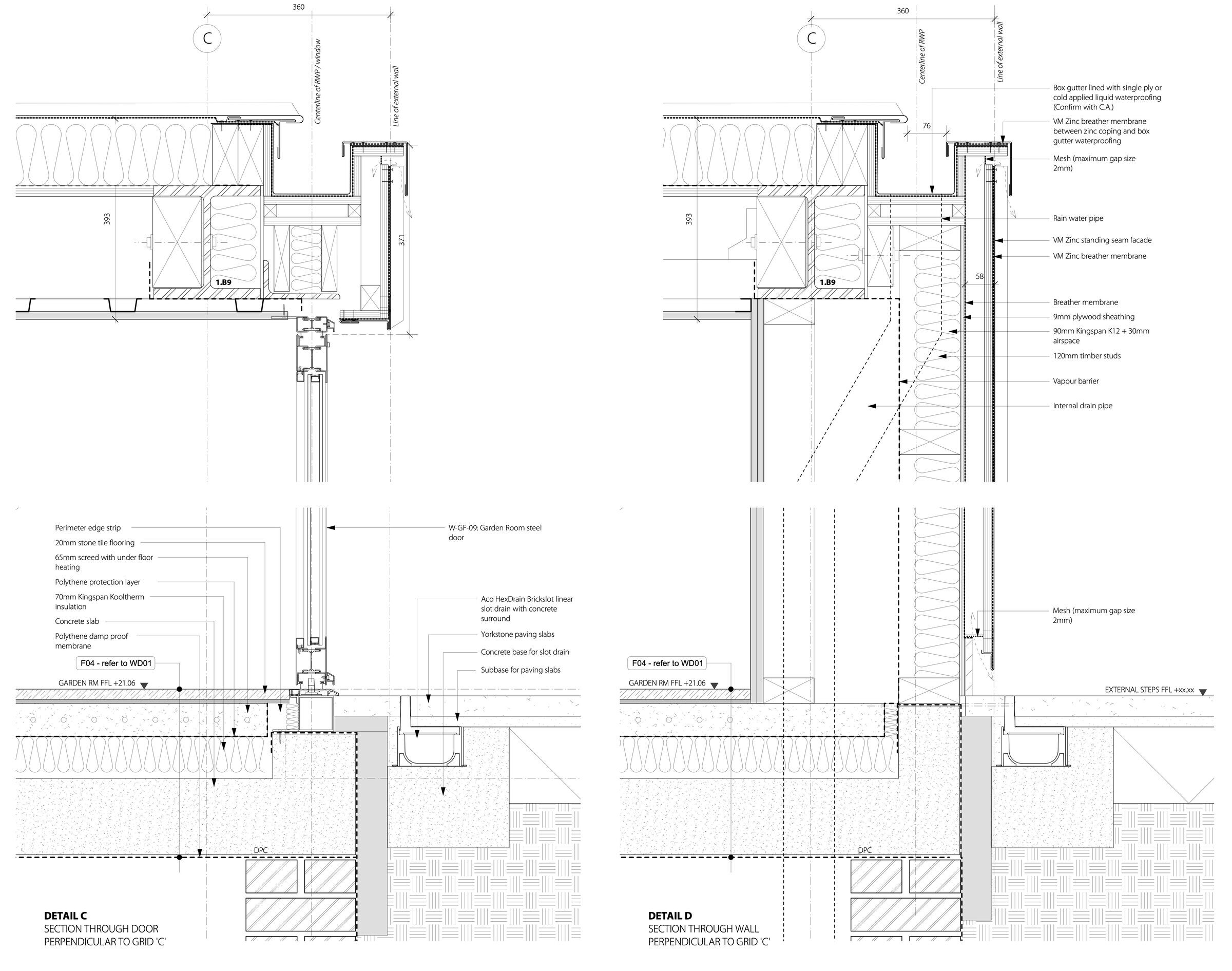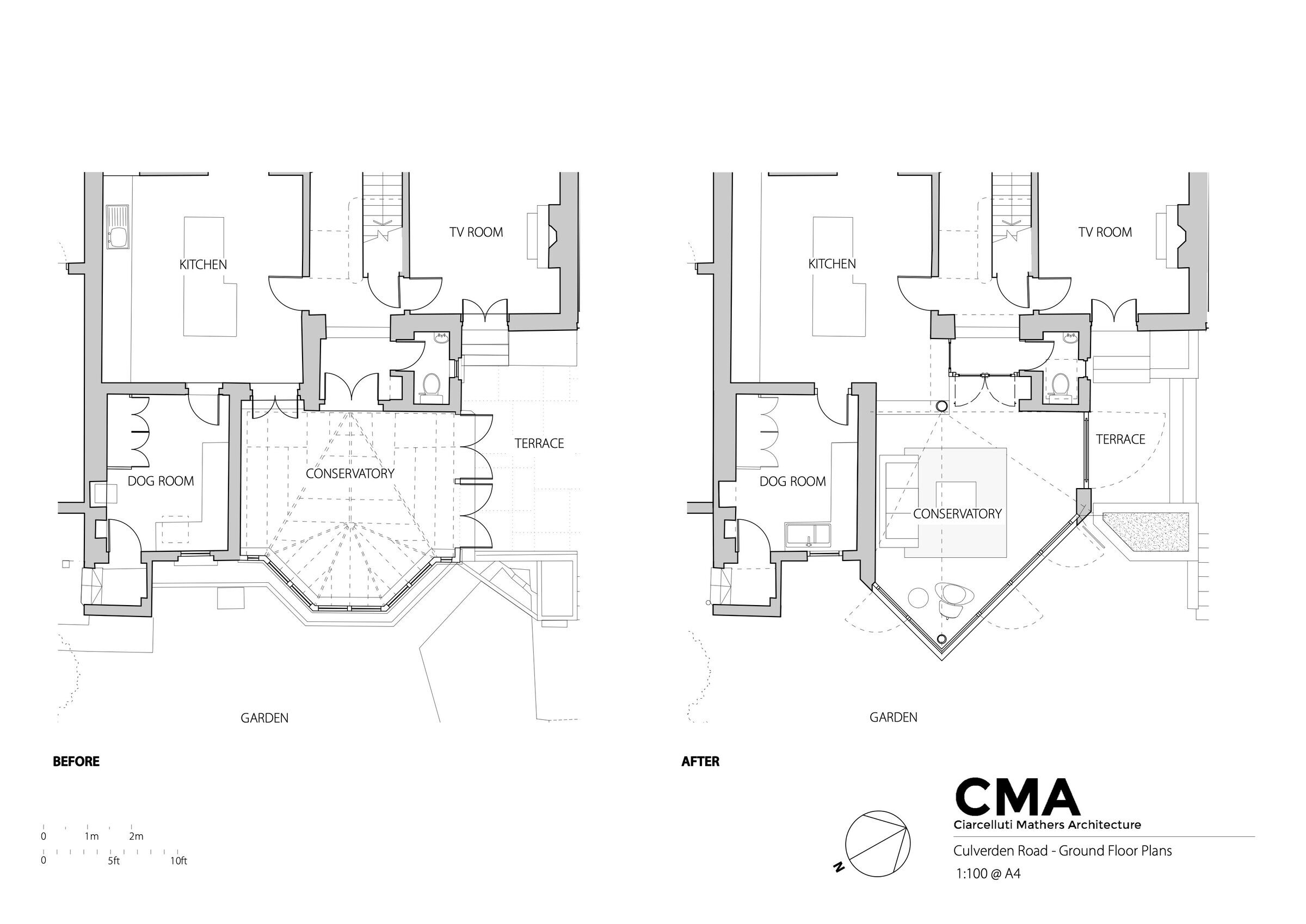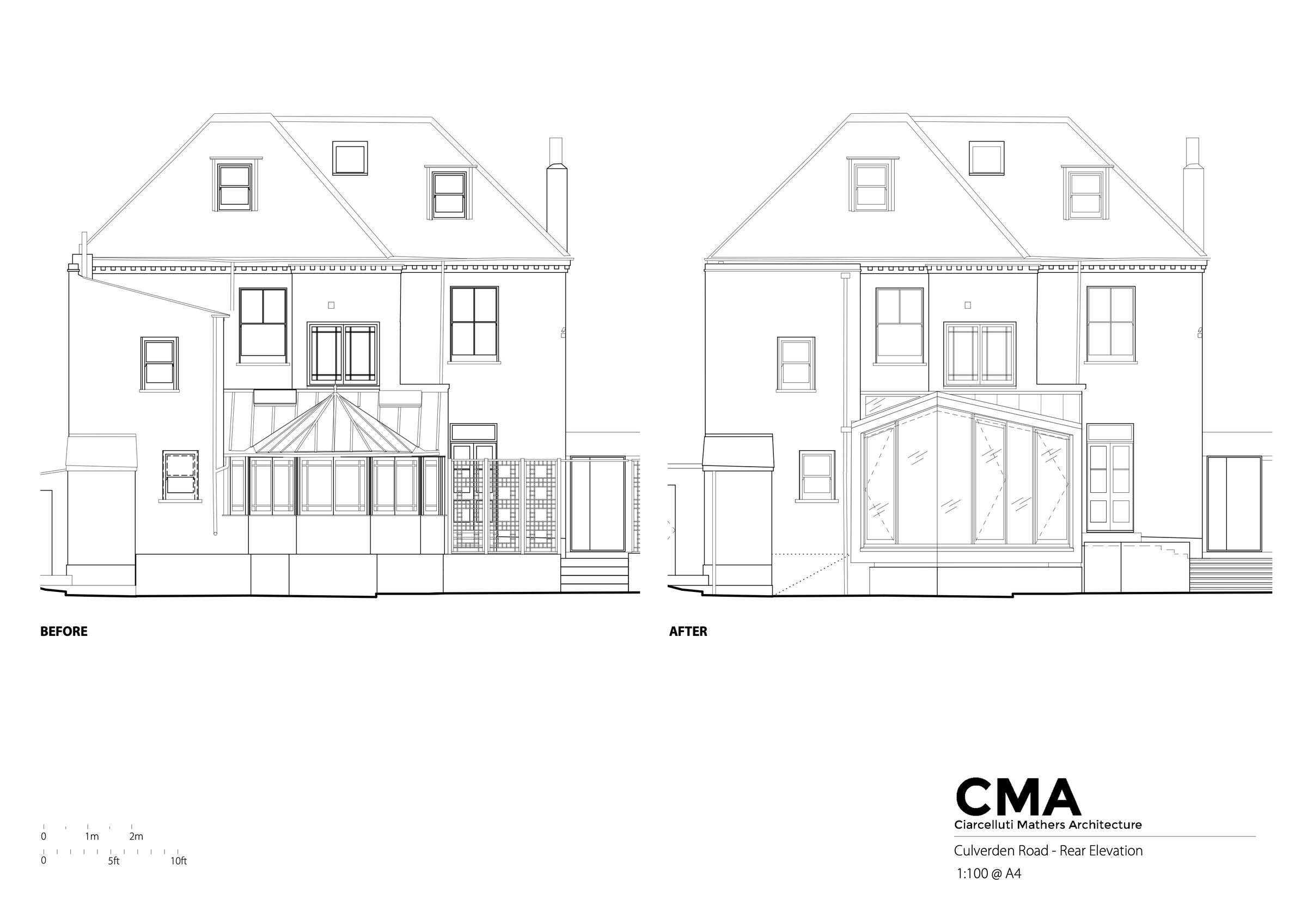The cantilevered garden room replaces an outdated, inefficient conservatory that had occupied the prime position at the rear of a detached property in Balham. A Victorian house within the Culverden Road Conservation area, the rear garden has views and direct access to Tooting Bec Common.
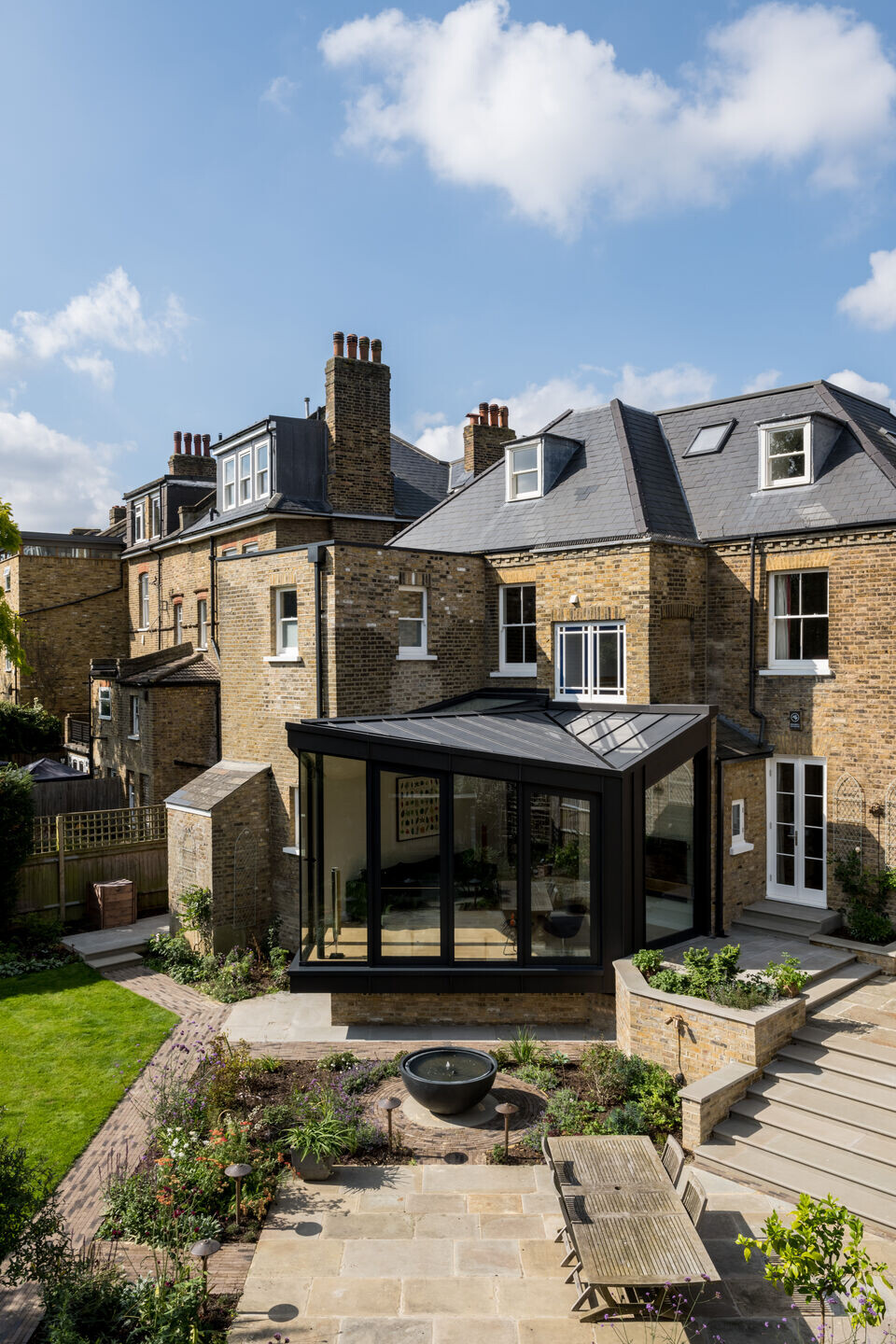
The clients were opposed to adding a rational glass box and sought a unique solution to improve daylight, the relationship with the garden, and the internal connections between rooms.
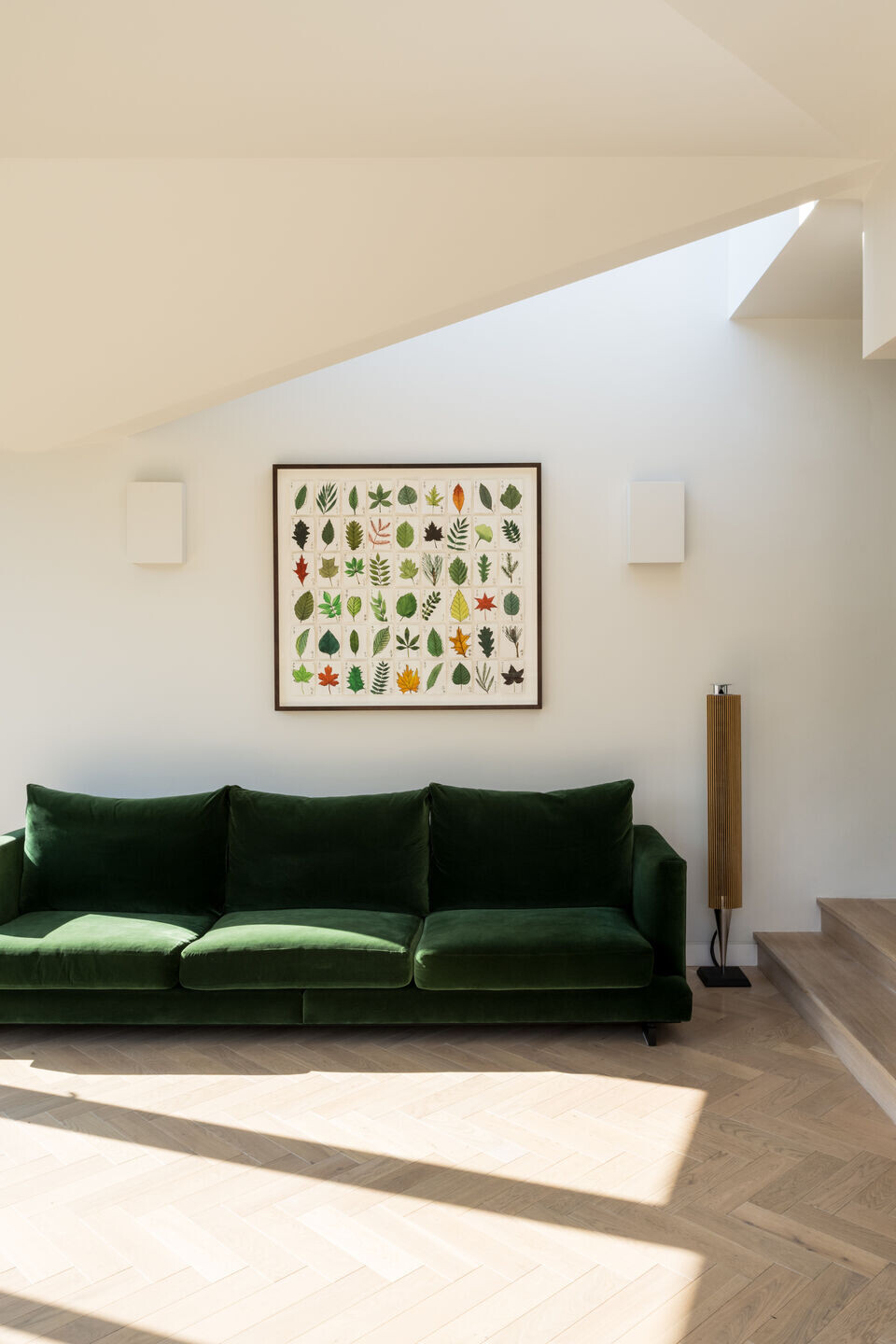
The relationship between the original building and the context was carefully considered. To establish a strong relationship to nature, we decided to cantilever the garden room, projecting it out and over the garden. The form is a unique response to the existing site, resulting from structural alignments with the original building and is a contemporary reinterpretation of angled lines of the original conservatory. Enlarged internal structural openings connect the kitchen and the hallway with the garden, improving the flow and making the house's interior brighter and more spacious. To eliminate a one-meter level difference within the first-floor bedroom suite, the floor and roof were rebuilt to raise the en-suite.
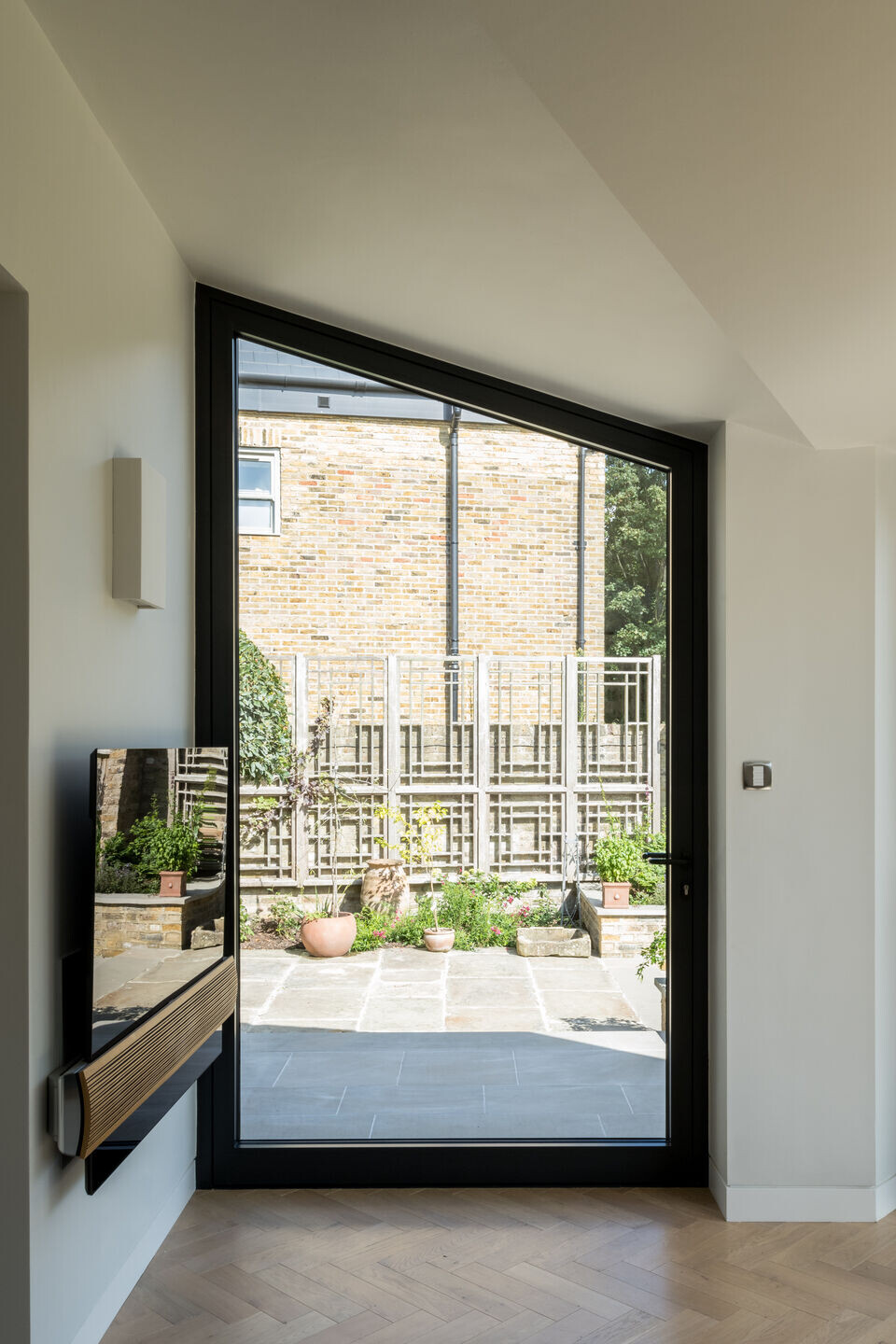
The new extension is zinc clad with extensive glazing to prioritise light and view. Its honest contemporary language exemplifies how new architecture can harmonise with a historical building without compromising its identity.
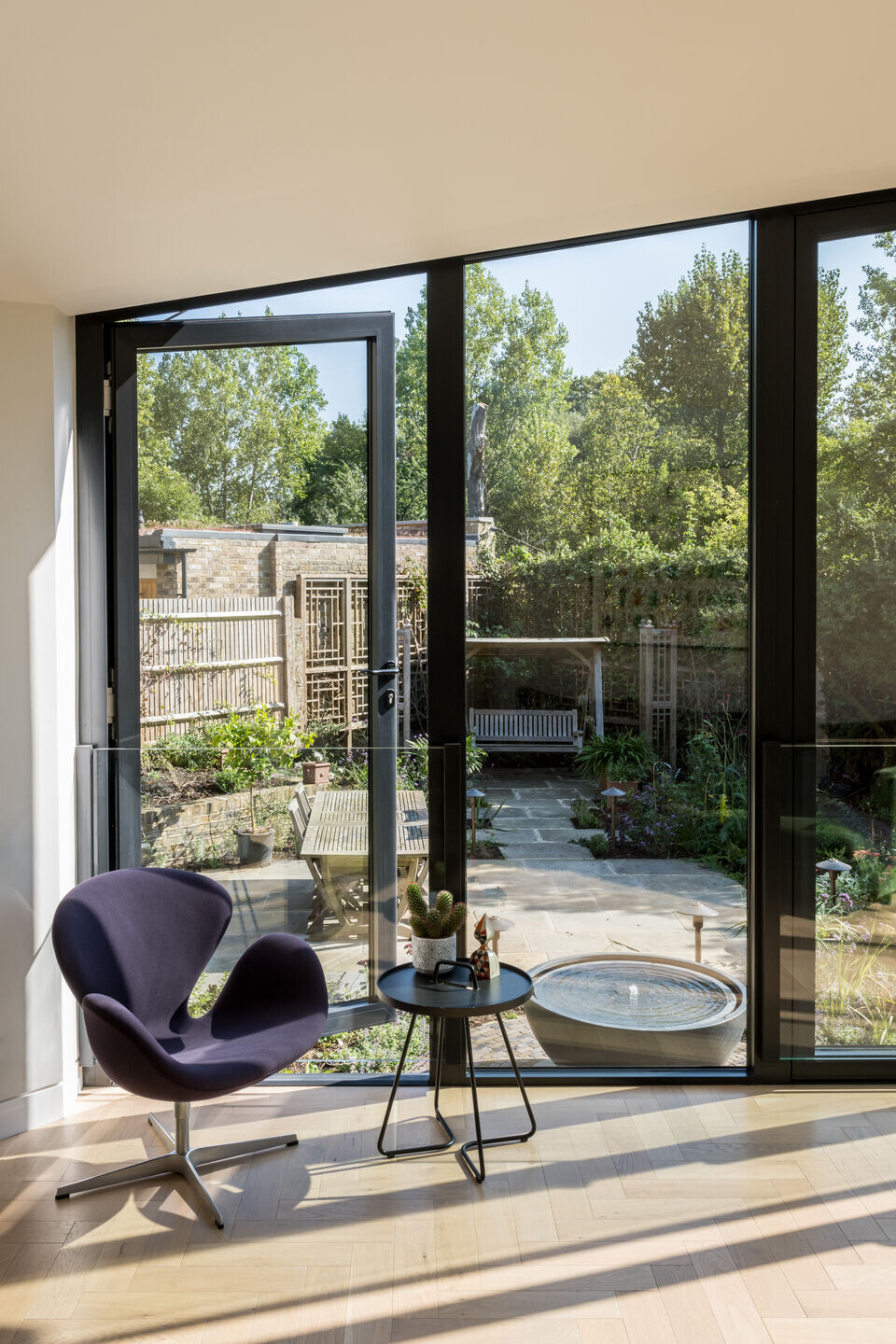
One of the project requirements was to make an energy-efficient garden room. We designed a well-insulated solid roof instead of glass to minimise heat loss and solar heat gain. Cantifix thermal glass technology, used for the doors and windows, maximises natural light penetration whilst filtering the wavelength generating heat, preventing the space from overheating during the warmest months.
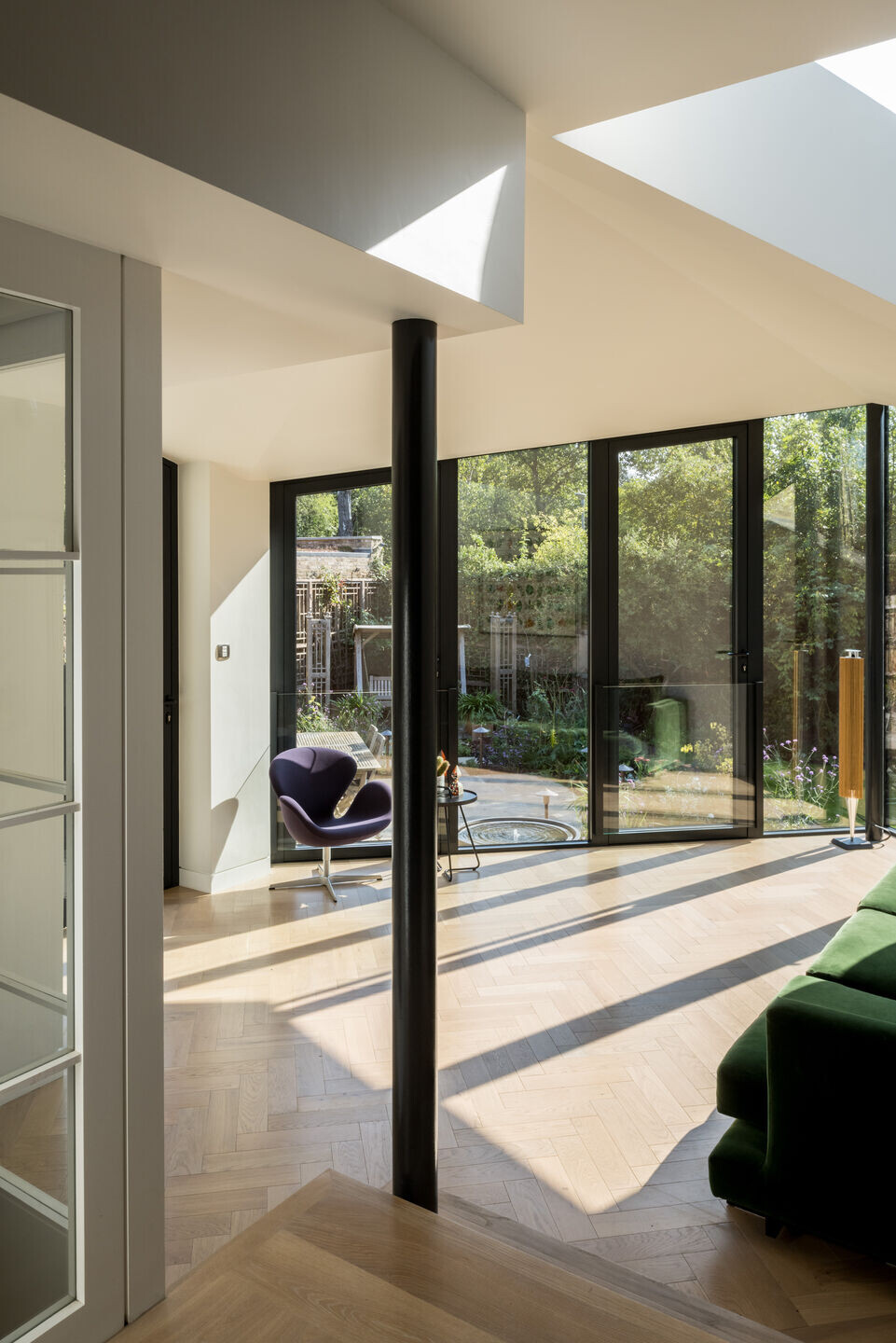
More than 70% of the glass surface of the garden room is operable. It mainly helps during the warmest months of the year to prevent overheating, and it also generates great cross-ventilation throughout the house if the interior doors are left open.
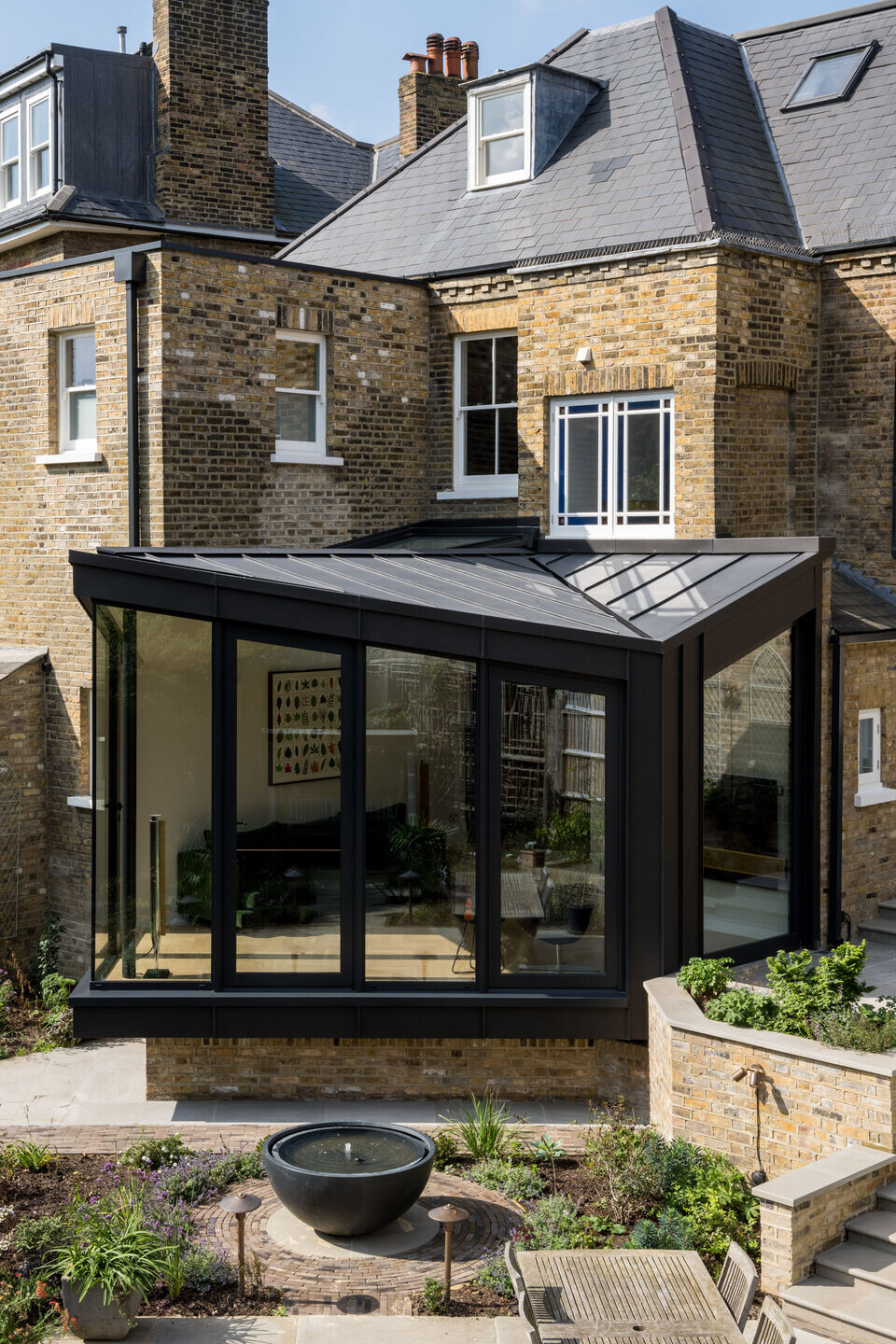
We completed the design in 2014 and 2015 before structural investigations identified the need for significant below-ground structural consolidation. The project was put on hold while the clients organised additional funding, reactivating it in 2018. Construction continued through the pandemic and was completed in September 2020.
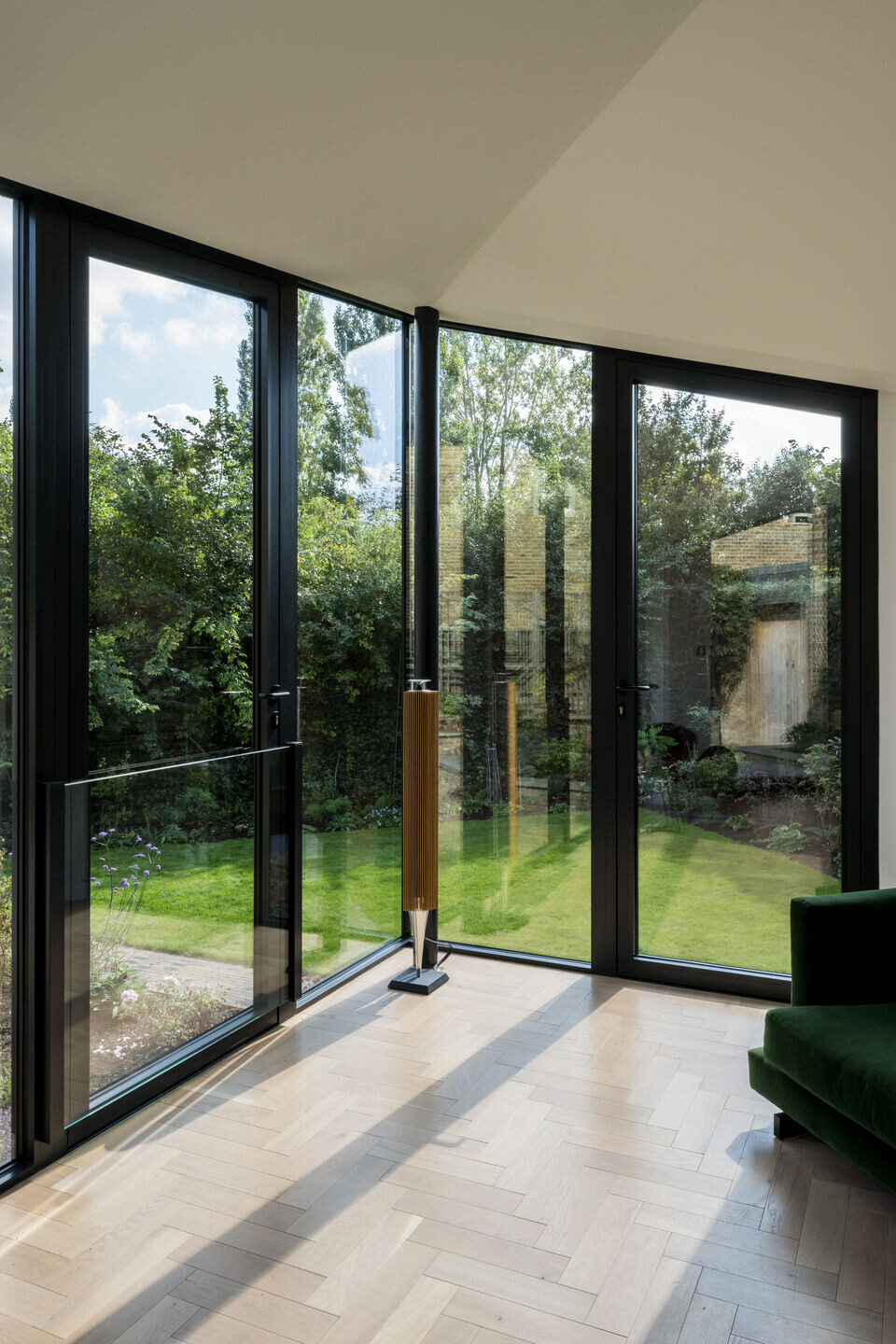
To establish a strong relationship to nature, we decided to cantilever the garden room, projecting it out and over the garden. The form is a unique response to the existing site, resulting from structural alignments with the original building and is a contemporary reinterpretation of angled lines of the original conservatory. Enlarged internal structural openings connect the kitchen and the hallway with the garden, improving the flow and making the house's interior brighter and more spacious
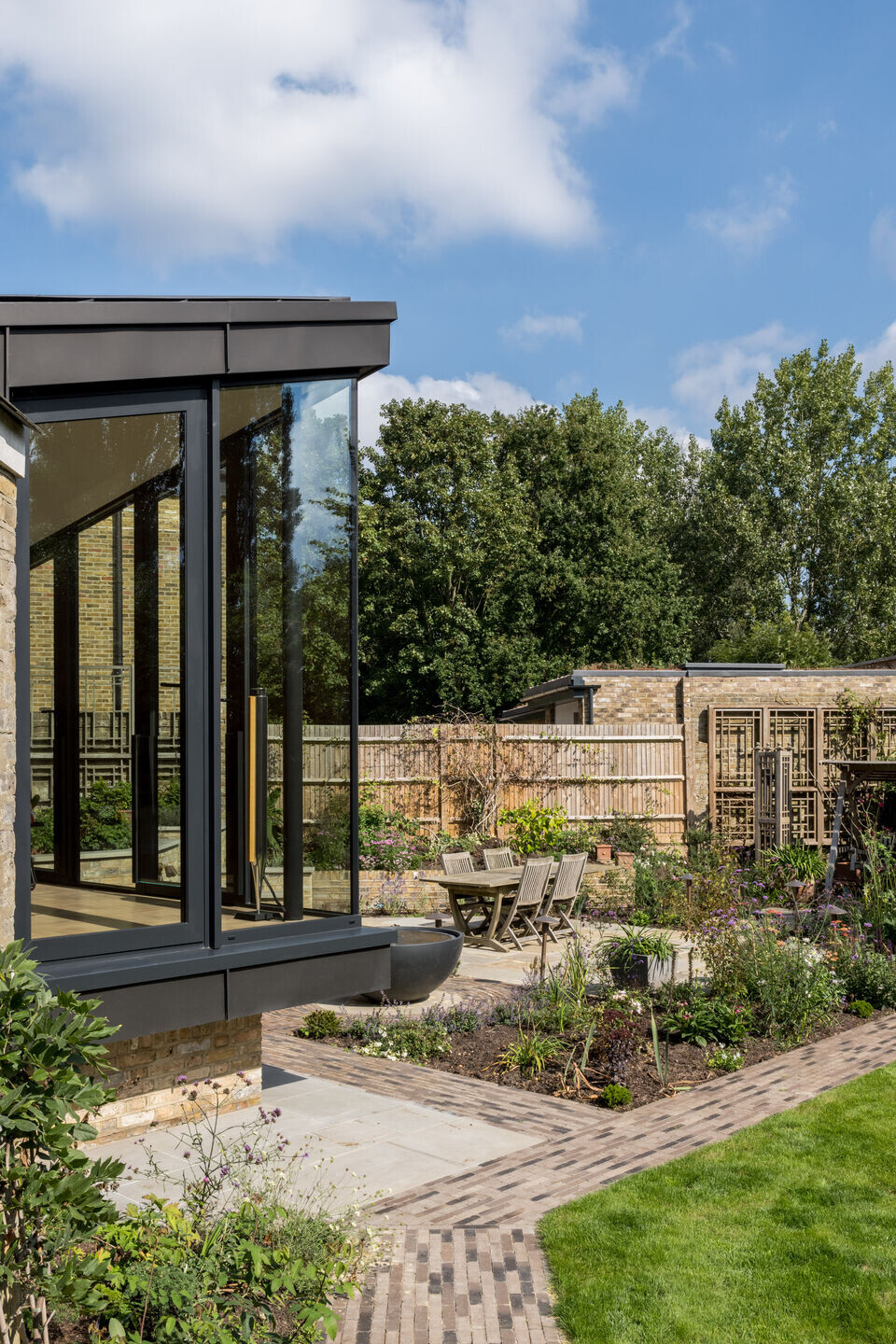
The clients wanted a new garden room replaces an outdated, inefficient conservatory that had occupied the prime position at the rear of a detached property in Balham. The clients were opposed to adding a rational glass box and sought a unique solution to improve daylight, the relationship with the garden, and the internal connections between rooms.

The biggest challenge was to relate the original building and garden at a lower level and to connect the new room with the rest of the house. The clients wanted a modern language, but also a unique response to the brief and context.
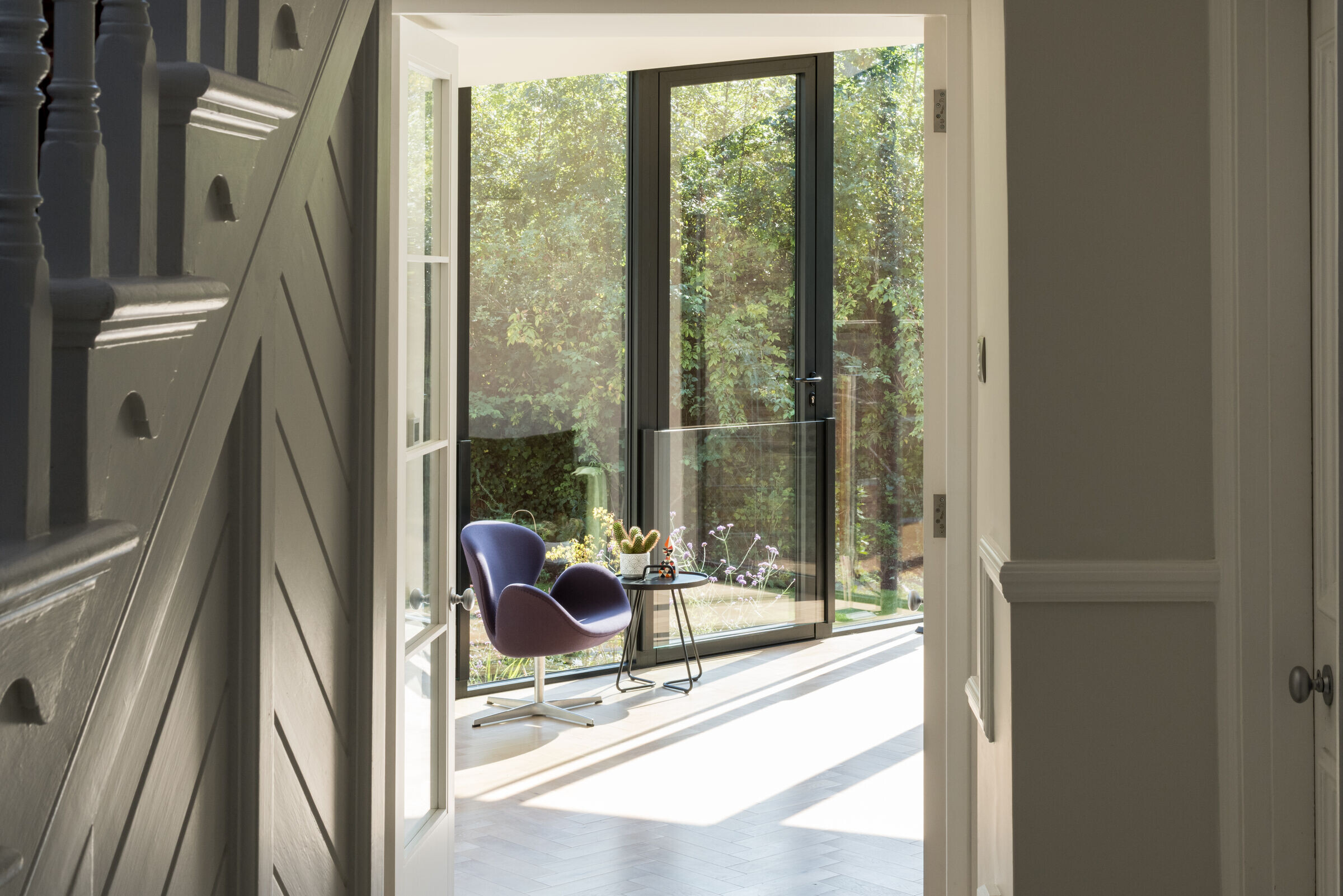
The clients are a couple approaching the retirement. They wanted a house to enjoy for the foreseeable future where to gather with family. and friends, maximise the comfort and the potential of the great location close to the common.
It has a sculptural form with a triangulated folded zinc roof, The design is a unique response determined by the existing building and context. The site challenges were turned into an opportunity to design something different.
One of the project requirements was to make an energy-efficient garden room. We designed a well-insulated solid roof instead of glass to minimise heat loss and solar heat gain. Cantifix thermal glass technology, used for the doors and windows, maximises natural light penetration whilst filtering the wavelength generating heat, preventing the space from overheating during the warmest months. More than 70% of the glass surface of the garden room is operable. It mainly helps during the warmest months of the year to prevent overheating, and it also generates great cross-ventilation throughout the house if the interior doors are left open.
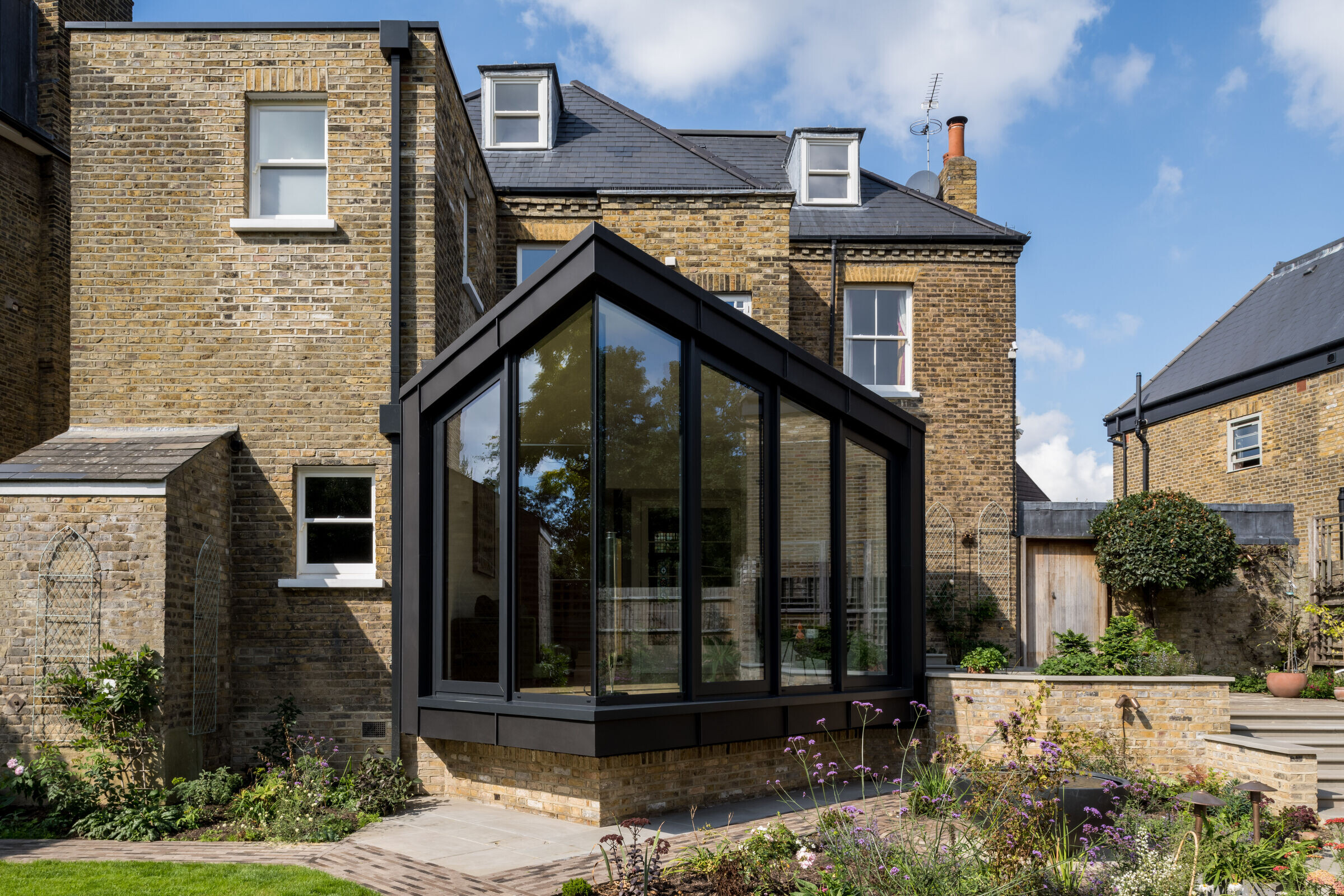
Team:
Architects: Ciarcelluti Mathers Architecture Ltd
Structural Engineer: Milk
Glass Design: Cantifix
Photographer: French + Tye
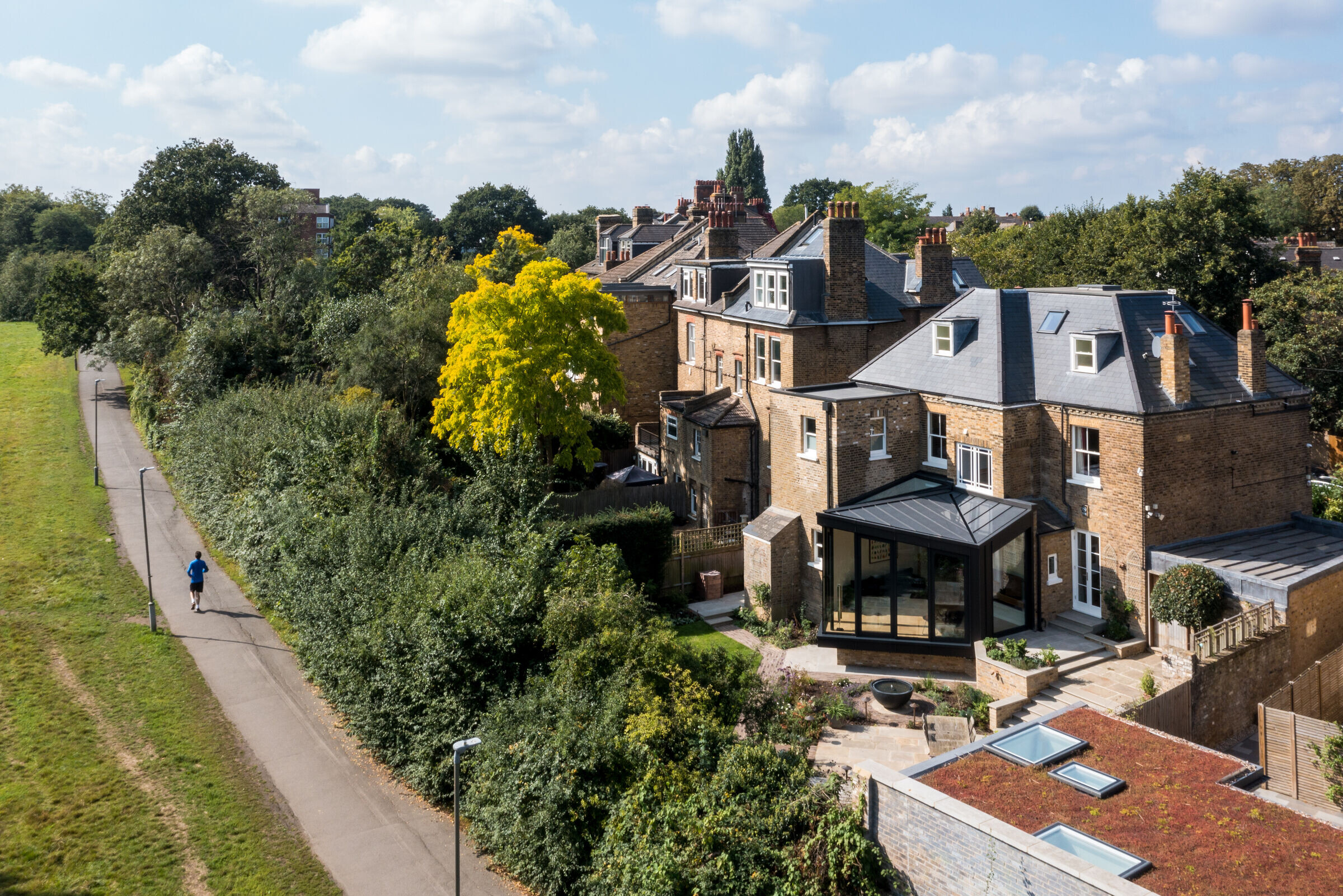
Materials used:
Partially cantilevered concrete slab, Steel and timber structure, Zinc cladding, and glass wall system. Zinc cladding, Solar coated Low Iron glass by Saint Gobain, Bespoke metal frame Schuco System (design by Cantifix), Natural Wood Floor
